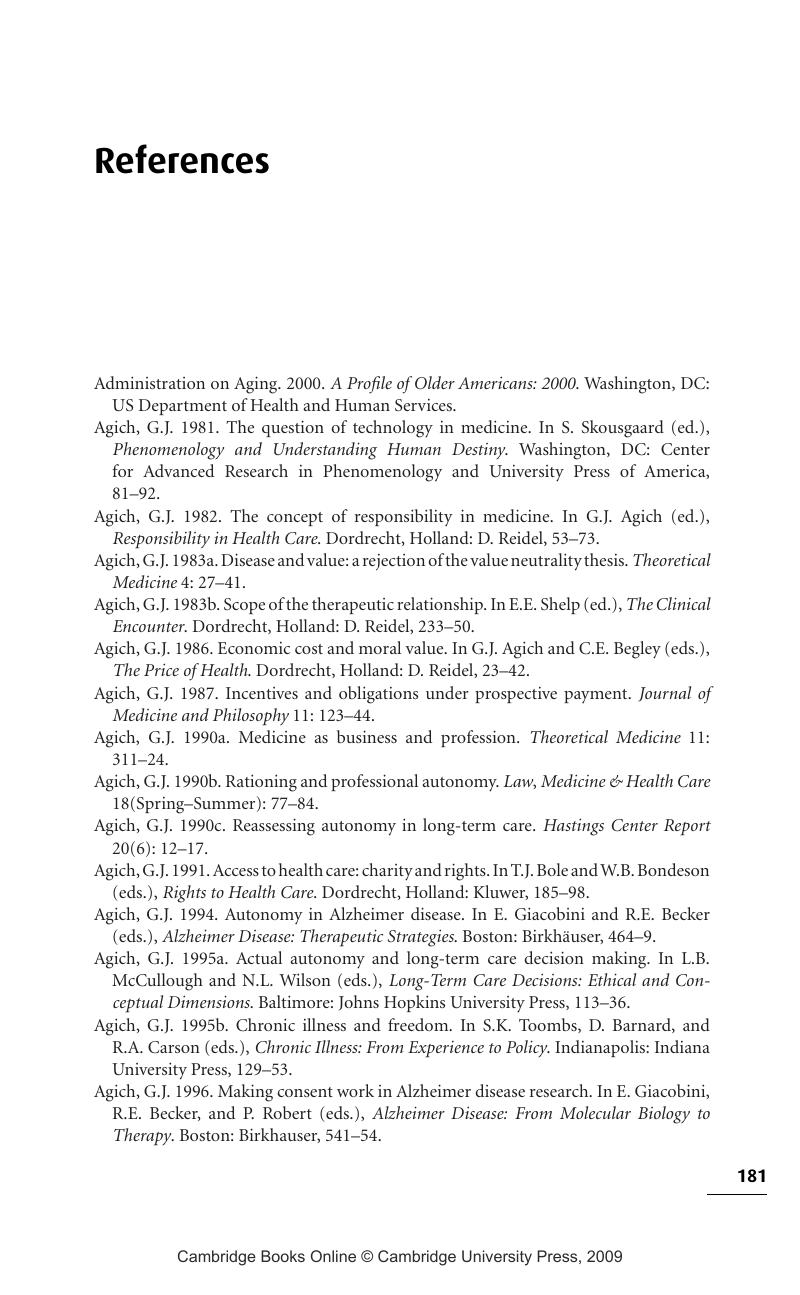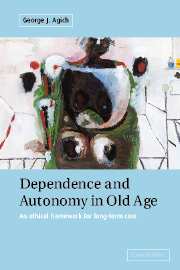References
Published online by Cambridge University Press: 31 October 2009
Summary

- Type
- Chapter
- Information
- Dependence and Autonomy in Old AgeAn Ethical Framework for Long-term Care, pp. 181 - 198Publisher: Cambridge University PressPrint publication year: 2003



